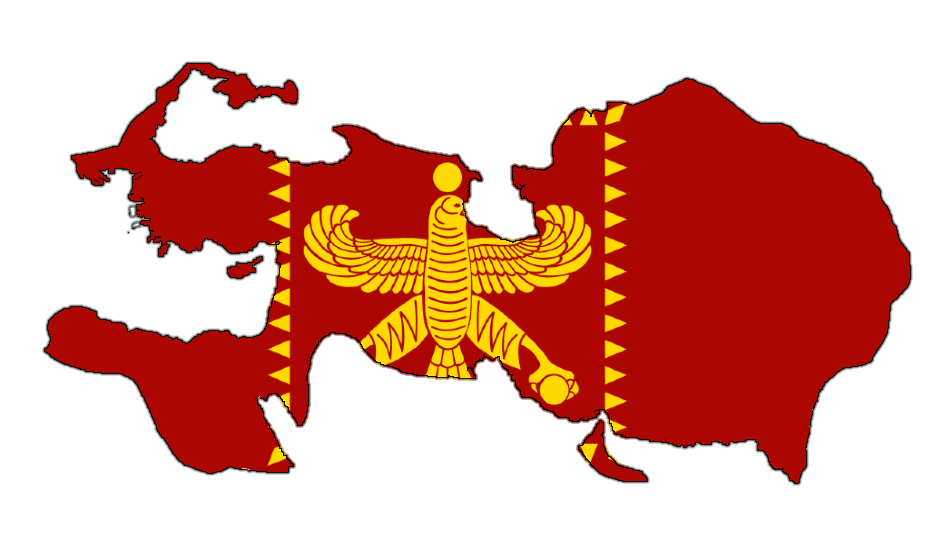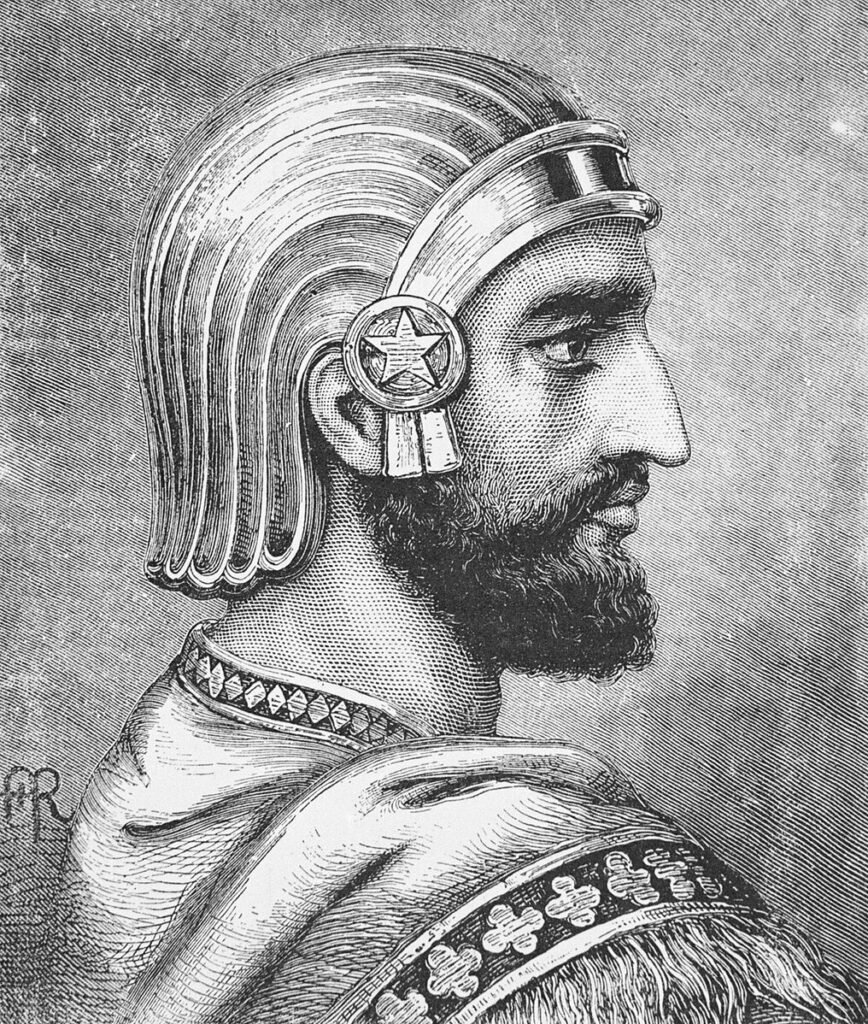The Achaemenid Empire, also known as the First Persian Empire, was founded by Cyrus the Great in 550 BC. It endured for over two hundred years and was eventually conquered by Alexander the Great in 330 BC.
During the reign of Darius the Great (522–486 BC), this empire became the largest that the world had ever seen. It spanned all the way from Libya to India and covered over two hundred million square miles of land.
The Empire was divided into twenty to thirty territories at any given time. These regions were called satrapies, and the regional governor in charge of each one was the satrap.
Darius the Great imposed a sophisticated system of taxation upon these satrapies. He accumulated immense wealth from throughout the Empire and constructed a new capital at Persepolis. The earliest known sales tax dates back to this time.

Languages
The Empire was founded by nomadic Persians, and Old Persian was its primary language. Imperial Aramaic was commonly used as well.
In the early days of the Empire, Elamite was used alongside the other two on legal tablets. It was the home language of Susa, the original capital.
Aramaic was the lingua franca most commonly used in written communication between regions that spoke different languages. Due to the size of the empire, dozens of other languages were spoken throughout.
Religious Tolerance
Cyrus the Great ushered in a period of religious freedom.
According to the Old Testament, he freed Jewish prisoners from Babylon and allowed them to return to Jerusalem. This was not an isolated incident.
Wherever he went, Cyrus restored temples and other sacred places to encourage the local populace to practice as they wished.
Many Persians did not worship anthropomorphized deities, and they found such practices laughable. According to Heterodontus, they paid homage to “the sun and moon, to the earth, to fire, to water, and to the winds.”
Zoroastrianism became increasingly common throughout this time period. People who subscribe to this religion worship a single god called Ahura Mazda and believe in free will. They follow the dictum Good Thoughts, Good Words, Good Deeds.

Military Power
Cyrus the Great established a massive army. Then Darius the Great created a navy and established a naval presence in multiple seas.
The infantry was divided into three groups: the Sparabara (shield bearers), Takabara (garrison warriors), and the Immortals (elite heavy infantry).
The Sparabara were the front line. Their shield wall protected the more vulnerable fighters, such as archers.
They were trained from childhood to become career soldiers and go off to fight in distant lands. Sometimes they wore bronze, but many soldiers had only quilted linen as armor.
The Immortals were the heart of the army. They numbered ten thousand men at any given time. Any man who fell was immediately replaced, and so they became known as the Immortals.
The Immortals and their horses were both clad in bronze armor. Some wore scale armor coats, the overlapping bronze scales shining like dragonskin. Others wore brightly-colored robes over their armor.
In addition to mounted soldiers and archers in chariots, there was a camel cavalry and even war elephants. Mules and camels carried high-quality food for the soldiers, and concubines traveled along with the caravans.

Coinage and Trade Routes
At the beginning of the Empire, coinage had not yet been introduced in Persis, the home territory of Cyrus the Great. Barter was the norm, though silver bullion was also used.
When Cyrus the Great conquered Lydia, home of the world’s first coins, he quickly adopted their coinage system. It wasn’t until the reign of Darius the Great that the Empire began producing their own coins. These golden darics and silver sigloi depicted the king shooting arrows.
The Empire’s busy trade network was linked by a highway system that stretched over 1550 miles. Darius the Great commissioned the Royal Road, which led from Susa in modern-day Iran to Sardis in Lydia.
Roadside inns called caravanserai supported the flow of goods throughout the Empire.
The World’s First Postal Service
The Chapar Khaneh was a postal system started by Cyrus the Great and further developed by Darius. Dedicated messengers stationed along the Royal road could transport messages with astonishing speed, ten times quicker than a man on foot.
“There is nothing in the world that travels faster than these Persian couriers,” wrote Herodotus. “Neither snow, nor rain, nor heat, nor gloom of night stays these courageous couriers from the swift completion of their appointed rounds.”
The Lives of Women
“Every Persian marries many lawful wives,” wrote Herodotus, “and keeps still more concubines.”
Royal women in the Achaemenid Empire were treated with respect by the king. The king’s mother was the highest-ranking woman at court, followed by his wife and daughters. They ate with him and traveled alongside him.
Noblewomen managed their own money, lands, and business endeavors. They traveled freely, accompanied by their staff. They rode horses and practiced archery from a young age.
Common women labored alongside men. They were employed as free laborers in Persepolis. They could even rise to leadership positions among the workforce, though they never led satrapies or the Empire itself. Women even served in the military.
Other Cultural Practices
Birthdays were an occasion for great celebration, marked with feasting and wine.
They were a civilized people. Herodotus wrote: “No one may vomit or urinate in another’s presence: this is prohibited among them.”
“When one man meets another on the road,” he continued, “it is easy to see if the two are equals; for, if they are, they kiss each other on the lips without speaking; if the difference in rank is small, the cheek is kissed; if it is great, the humbler bows and does obeisance to the other.”
Another tidbit from Herodutus on the Persians: “They educate their boys from five to twenty years old, and teach them only three things: riding and archery and honesty… They hold lying to be the most disgraceful thing of all.”

